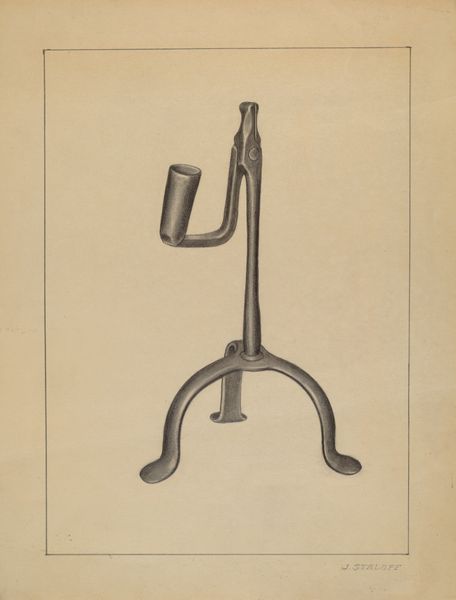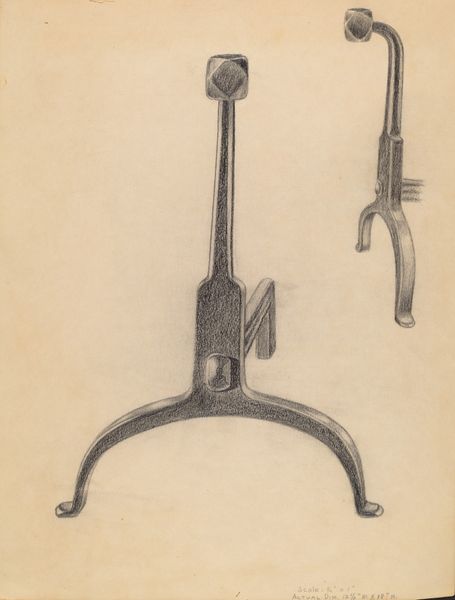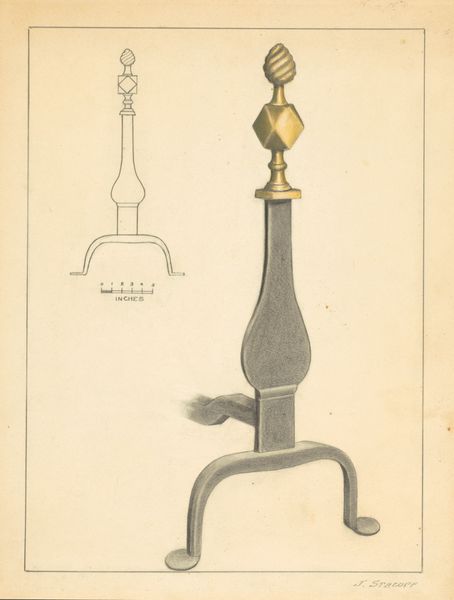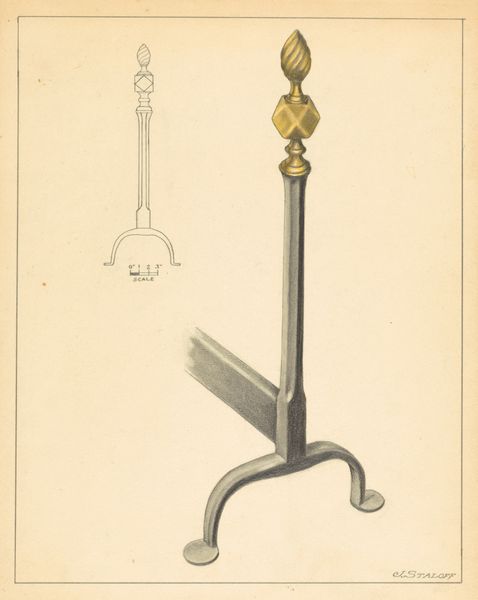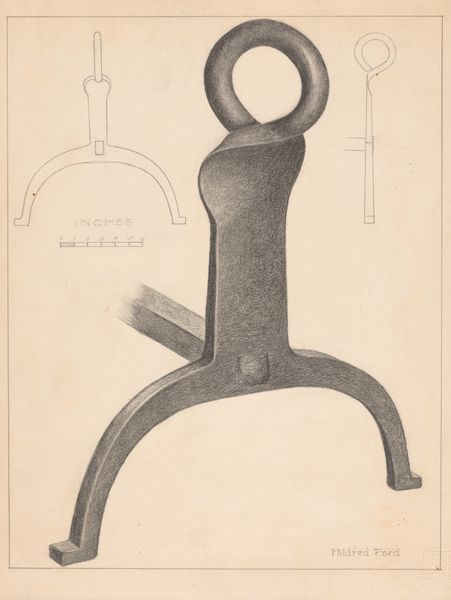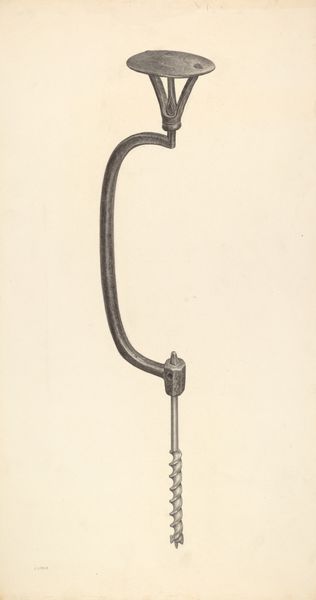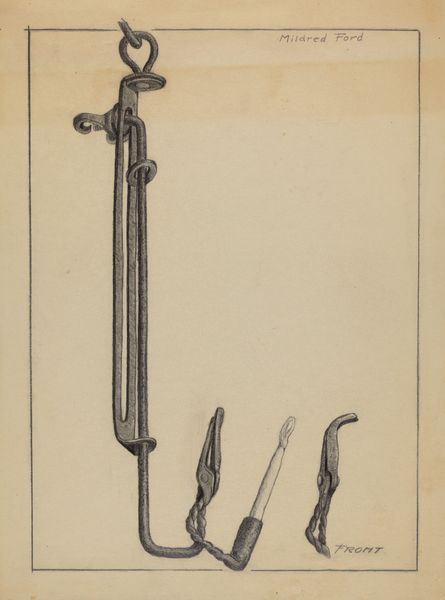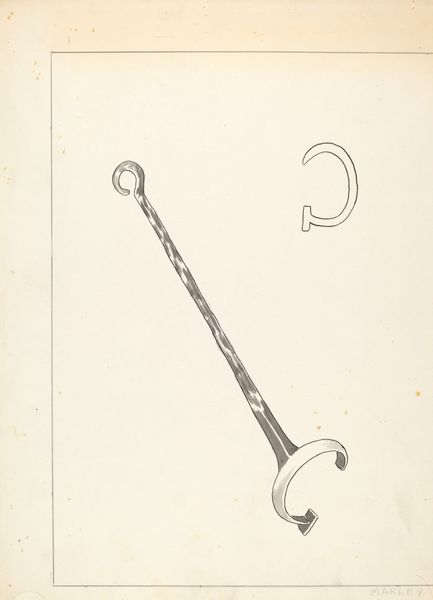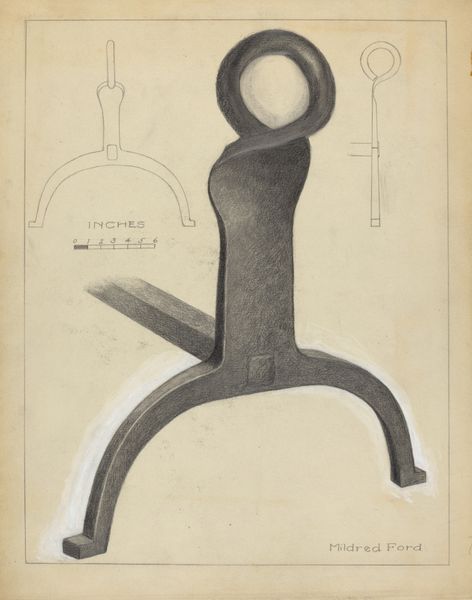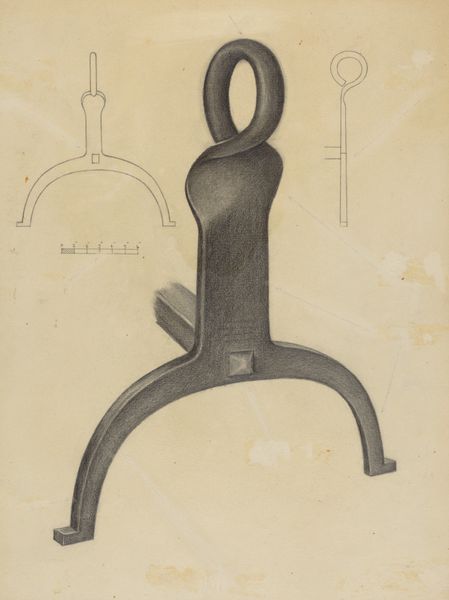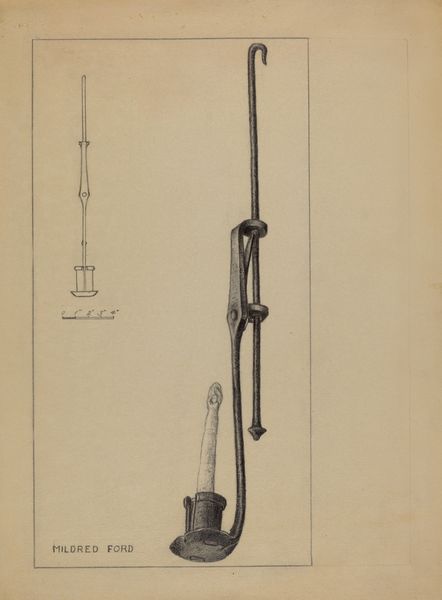
drawing, paper, pencil
#
drawing
#
paper
#
form
#
geometric
#
pencil
#
line
#
academic-art
Dimensions: overall: 29.5 x 21.6 cm (11 5/8 x 8 1/2 in.) Original IAD Object: 16" high
Copyright: National Gallery of Art: CC0 1.0
Curator: This drawing by Jack Staloff, dating to around 1936, is titled "Andiron (one of pair)." It's rendered in pencil on paper. Editor: The mood is strikingly industrial, even a bit somber. The precise lines and the monochromatic palette feel very pragmatic, but with that touch of soft gradient of the material... It's stark, almost like a blueprint, yet possesses a certain elegance. Curator: Yes, it's interesting how Staloff combines pure geometric forms with a kind of idealized rendering, reminiscent of academic art traditions. Look at the recurring square motif – the feet, the joining elements, the very top. Editor: Squares represent stability, the earthly realm, right? Fireplaces have always been symbolic as sites of domesticity and storytelling. I can't help but think about the era. The 1930s was such a critical moment with the rise of fascism; hearth and home become powerful statements. Is the artist seeking refuge in this domesticity, evoking these symbols for stability? Curator: I see the geometric elements more as representative of the formal purity sought by designers and architects of the period. The focus on line also evokes a desire to capture the essential form. Andirons are tools – implements that, from ancient forges onwards, suggest an ability to harness elemental forces. Editor: Sure, function is definitely at play. But consider who was accessing such ‘functional’ design in the 1930s. These kinds of andirons speak of an aspirational lifestyle and, by default, of inequality. Who is afforded warmth and safety? Whose stories are told around the hearth? The visual symbolism is there for sure, but the material history screams the politics of class. Curator: The very material used, the cold, unyielding iron itself. The square forms become like runes or logograms here, expressing solidity. Editor: So, between those lines and shades we discern the economic climate alongside this iconographical symbolism. I keep seeing both comfort and denial encoded within it. Thanks, it gave me a new perspective. Curator: And for me, it’s made me consider how simple geometries might encode deeply human needs and concerns in utilitarian objects.
Comments
No comments
Be the first to comment and join the conversation on the ultimate creative platform.

